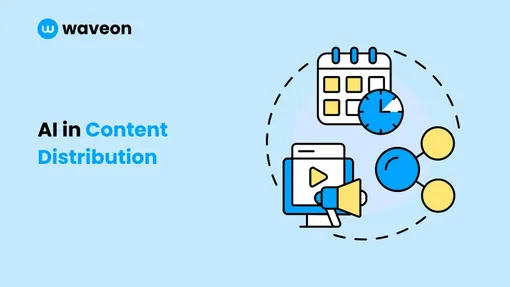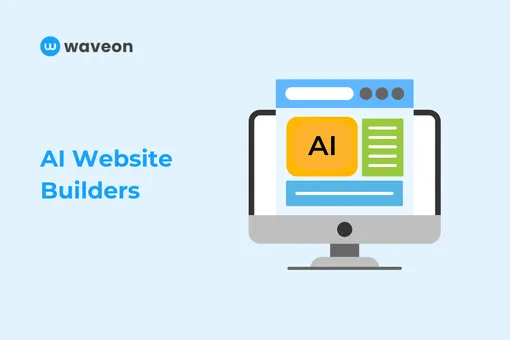Marketing
What is Content Marketing Automation & How to Leverage it
Ekta Swarnkar
1/9/2024
0 min read
TABLE OF CONTENTS

The early 2000s was the time when content marketing became mainstream for brands. And ever since then, content has been in its position.
Every other business creates content today, but are they all benefitting from it? No.
-
Brands that have mastered balancing content quality and quantity are crushing it.
-
Brands that prioritize distribution as much as production are driving excellent results.
-
Brands that are leveraging automation are boosting conversions without much effort.
Take Semrush, for example.
Semrush’s blogs take first spots on many SEO-related keywords.
-
Semrush’s social media profiles are branded with a unique brand voice.
-
Semrush’s newsletters are always on time with actionable strategies.
So, how Semrush creates top-quality content at scale?
By combining content with automation, Semrush could produce high-quality content at scale.
This post is about content marketing automation, including strategies to implement automation into your existing content marketing system with tools and examples.
What is content marketing automation?
Content marketing automation is implementing technology into your content marketing workflow to automate repetitive tasks and optimize campaigns to boost conversions.
Automation frees human resources to focus on more critical tasks like audience research, crafting compelling content, etc. Here are a few tasks you can automate in your content operations:
Batch schedule social media posts, emails, and blog posts.
Generate new content ideas to fill your calendar.
Automate content sharing on different platforms.
-
Simplify collaboration among team members and speed-track workflows.
Automate analytics by integrating multiple platforms.
Send personalized email newsletters based on user interaction.
Run automated retargeted ads campaigns.
For example, I can instruct ChatGPT to generate content ideas for my Instagram page. The more detailed my prompt is, the better would be the results.

Benefits of automating content marketing for small businesses
Small business owners are already juggling multiple roles, so every minute counts. The good news is besides saving time and resources, automation helps you in many ways:
1. Scale content production
Automating content marketing allows you to scale content production. How? Enter content repurposing — using a content idea to create multiple content pieces suitable for different platforms.
For example, I can convert a blog post into small snippets and share them across social media platforms to get more eyeballs. Canva allows you to resize posts into different dimensions:

Repurposing is an easy way to increase content production by converting a few content ideas into engaging social media posts. But don’t limit yourself to social media. Think podcasts, videos, and blog post angles.
2. Improve productivity
Repetitive tasks like content scheduling and creation take much time, directly affecting the content team’s productivity. When these tasks are automated, your content team focuses on more productive tasks like extracting insights and generating content ideas that increase sales.
For example, Buffer allows you to automate batch creation and scheduling of a month’s content in one dashboard.

So, once a content calendar is filled, the social media team can focus their efforts on other tasks like social media listening and responding to comments that build engagement.
3. Improve consistency
Automated scheduling also helps you stay consistent with regular content publishing — as you know, marketing platforms like Facebook and Instagram reward brands that publish high-quality content regularly with more exposure.
You can schedule content for the next few months without worrying about publishing daily with a few clicks. What can you do in the meantime? Engage with your audience as algorithms prioritize posts that spark conversations.
4. Get more exposure
Every media channel needs attention to grow to its full potential — without automation, you can only focus on one platform at a time. But with automation, you can easily repurpose and schedule content for different platforms with minimal effort.
The Buffer’s AI assistant allows you to create, repurpose, and schedule posts automatically based on your commands.
By not being present on different platforms, you’re missing out on opportunities — you’re giving away your customers to competitors. Automation exposes your brand and builds authority so your customers become loyal.
5. Increase conversion rate
Content automation is a simple way to reduce human error, extract valuable insights, and create more aligned marketing messages that result in better conversion rates.
Use tools like SproutSocial for social listening. SproutSocial’s smart inbox monitors your interactions with your audience to find keywords, sentiments, new topics, and customer’s pain points. Leverage this data to create targeted marketing campaigns.
6. Improve brand awareness
What happens when you create more targeted marketing campaigns? One of these three things:
You get customers.
You get brand advocates.
You get customers as well as brand advocates.
Not all of your audience will become customers (for various reasons!), but they’ll become brand advocates who’ll refer your business to their network. Why? Because they find your content relevant.
7. Improve customer relationships
You can leverage automation to enhance your relationship with your existing and future customers — to retain them with your brand longer.
How? Use AI chatbots, automated product tutorial content, and user guides to help them in every step of their product usage journey. By assisting them at every step, you appear as a responsible partner they will want to be associated with for a long time.
How to integrate content marketing automation in your business: 6 strategies
Now that you know automation is necessary for content marketing, how do you start? Here are the basic but effective strategies that will help you reduce workload and increase conversion rates:
1. Automate social media content
Start with automating your social media content management. Use tools like Buffer or Hootsuite to create, schedule, and repurpose posts for all major social media platforms where you have built an audience.
Take Semrush’s social media profiles for inspiration. Each of Semrush’s social media profiles is well-established and frequent.

Don’t restrict yourself to creation and scheduling. You can leverage automation in almost every aspect of social media. According to NapoleonCat’s calculator, you could save 175 hours per month by automating comments on social media posts — so think of tasks that take a lot of time and could be automated.
2. Repurpose content to reach a wider audience
According to The State of Content Marketing 2023 report by Semrush, 42% of marketers said that content updating and repurposing led to successful marketing campaigns and broader reach.
That’s why Semrush is bullish on repurposing — converting one content idea into multiple social posts and sharing across different platforms. For example, they shared this Christmas post on LinkedIn and Instagram.

And not just one; you’ll see many content pieces shared at alternate times on different platforms. Why? Because repurposing simplifies workload, saves time and resources, increases reach, and gets better results. It’s a win-win-win-win!
3. Automate email marketing
Automating email marketing has some profound benefits:
-
Automated emails generate 31% of all regular orders. (Omnisend)
-
Automation is vital in sending welcome nurture emails — which get $36 ROI for every $1. (HubSpot)
-
Automated emails achieved 84% higher open rates, 341% higher click rates, and a staggering 2,270% increase in conversion rates. (Omnisend)
And you can search “email marketing automation statistics” for more stats.
Email marketing can be automated from scratch to end:
Automate welcome email sequences to nurture your subscribers.
-
Send personalized newsletters based on your user’s interaction.
Send curated newsletters based on customer preferences.
Create and send automated abandoned cart emails.
-
Connect email marketing with your e-commerce brand to send personalized product recommendations.
Choose an email marketing automation platform that fits your needs and budget. For example, Waveon allows you to create automated promotional newsletters in one click.

4. Leverage chatbots to solve quick queries
The B2B buyer journey report by Chilli Piper revealed that the average response time for a customer query is two days.

But what if the customer checks out your competitor’s products and finds them better during this time? You lost a customer only because you didn’t get back to them.
The thing is, these website visitors often have simple queries, and when addressed timely, you can probe them into more profound questions and schedule a product demo session.
AI-powered chatbots are perfect for addressing these simple queries. Chatbots search through your content library to find relevant answers, ask follow-up questions, and automatically book an appointment with a sales rep if more help is needed.
5. Automate content performance tracking
Gathering data, analyzing data, and extracting insights are three of the most challenging tasks in any content marketing operation. Not only are they time-consuming, but they also require more attention.
This can be simplified by using automated analytics platforms like:
-
Hotjar for heatmaps to see user engagement based on behavior.
-
Mixpanel to view how users interact with your product.
-
Woopra will track every step of a customer journey.
These are a few examples but keep in mind while choosing an analytics platform to see if it offers automated reporting. Otherwise, you’d have to convert complex data into insights by yourself.
6. Automate social media listening
Personalization is the solution to achieving great conversion rates in the current attention-deprived market. But how do you personalize content for your customers with unique preferences?
Using automation. More specifically, automating social media listening using tools like Gong.io to increase revenue by tracking user engagement on different social media platforms and collecting insights like:
Keywords
Sentiments
Emotions
Preferences
Your content efforts need an “automation” push to reap results
If you’re not leveraging automation, you’ll be left behind because your competitors use automation in their content operations to sweep your customers.
Content marketing automation is no longer a choice — it’s become a critical component of marketing strategy. And those who embrace it will reap the benefits.













